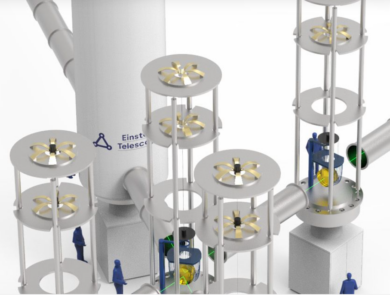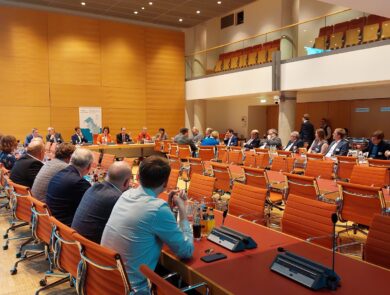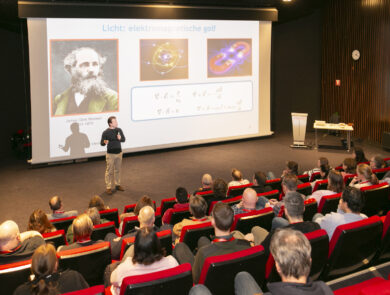Grant for follow-up studies subsurface approved

The first measurements recently showed that the subsurface of Limburg seems ‘quiet enough’ for the Einstein Telescope. Now the European grant for the follow-up research has also been approved. The University of Liège will coordinate the consortium consisting of 11 institutes from the Netherlands, Belgium and Germany. Together they will map the subsurface of the Meuse-Rhine Euroregion. They will also develop a full-scale cryogenic mirror for the Einstein Telescope.
From groundwater models to ‘the triangle’
The study will run from the beginning of 2020 to the end of 2022. The researchers will work on an underground monitoring system and a model. This will enable them to accurately monitor and predict issues such as groundwater levels and possible earthquakes in the area. The study will also show exactly where the Einstein Telescope could be located. This requires an equilateral triangle with sides of 10 km at a depth of 200-300 meters. Important factors are the type of subsoil, the stability of the soil and groundwater fluctuations at certain locations.
Frank Linde is project leader for the Einstein Telescope at Nikhef and is enthusiastic: “It is fantastic that this project has been approved. This will enable us to work on a missing piece of the puzzle in our ambition: determining the optimal location for the Einstein Telescope in the border region.”
Frédéric Nguyen is Professor of Applied Geophysics at the University of Liège. He explains why this research is necessary: “Depth drilling and large-scale geophysical research are expensive. As a result, underground information is generally sparse. Not only here, but in many places in Europe and the world. That is why it is necessary to support initiatives aimed at improving knowledge of geology and the subsurface.”
He also explains the general importance of geological research: “We will gain new insights into geology, groundwater and seismic conditions. This is important for society, because the subsurface is our main supplier of many natural resources, such as water, minerals and energy. But also because the soil can accommodate large civil engineering structures. With this research, we can reduce geological risks, including those associated with earthquakes.”
Innovative mirror
Funds have also been allocated to innovation of gravitational wave detectors. The researchers will work on better mirrors, vacuum installations and vibration damping. They will install a full-scale silicon mirror for the Einstein Telescope in Liège for this purpose. The cooled silicon mirrors are an innovation compared to existing gravitational wave detectors. They are less sensitive to noise and therefore the accuracy of the detector will improve. The set-up is an addition to the research that will be carried out with the R&D lab ETpathfinder.
Partners in the Netherlands, Belgium and Germany
The research will be carried out by a consortium of 11 partners in the Netherlands, Belgium and Germany, led by the University of Liège. Partners are: Université de Liège, RWTH Aachen, UHasselt, Rheinische Friedrich-Wilhelms-Universität Bonn, NMWP Management GmbH, Fraunhofer-Gesellschaft zur Förderung der ande Forschung e.V., KU Leuven, Nikhef, KNMI, UCLouvain and Maastricht University. The Université Libre de Bruxelles, Vrije Universiteit Brussel, UGent, the University of Antwerp and the Université de Mons are also involved as satellite partners. Many Belgian, German and Dutch companies have also confirmed that they support the initiative.
The total budget for the approved project is 15 million euros. Approximately half of this amount is made up of the awarded Interreg-grant. The other part is expected to be confirmed after a last validation step. Contributions will come from the Dutch Ministry of Economic Affairs, North Rhine-Westphalia, the Province of Flemish Brabant, the Province of Dutch Limburg, the Province of Belgian Lumburg, Flanders and Wallonia.



